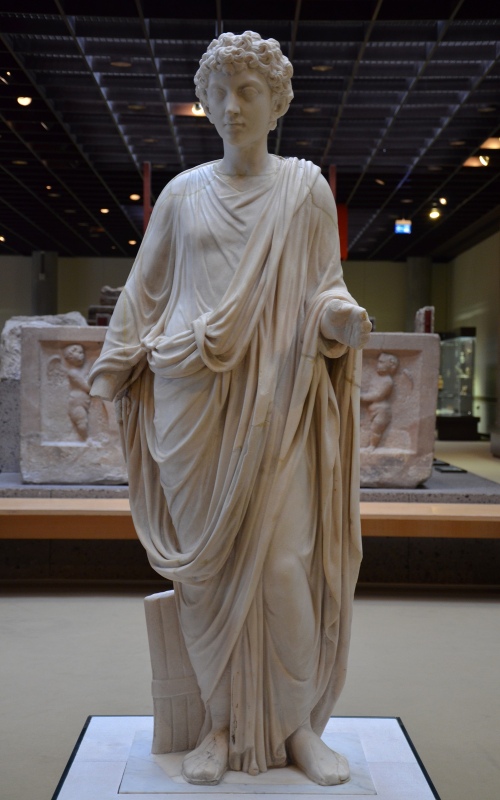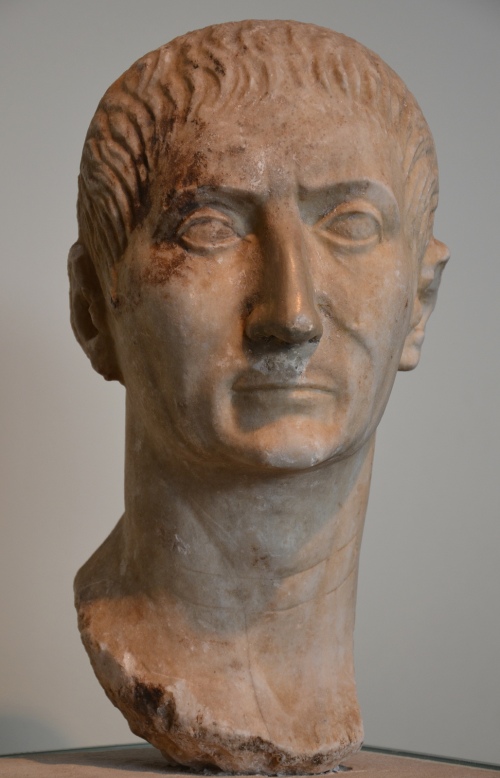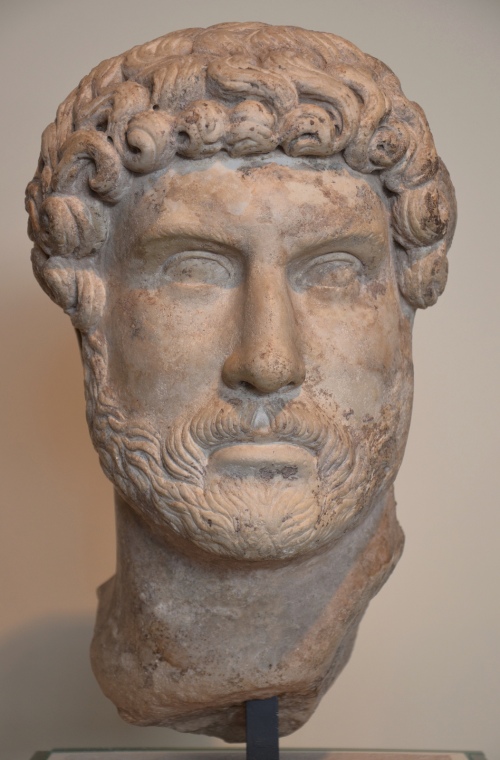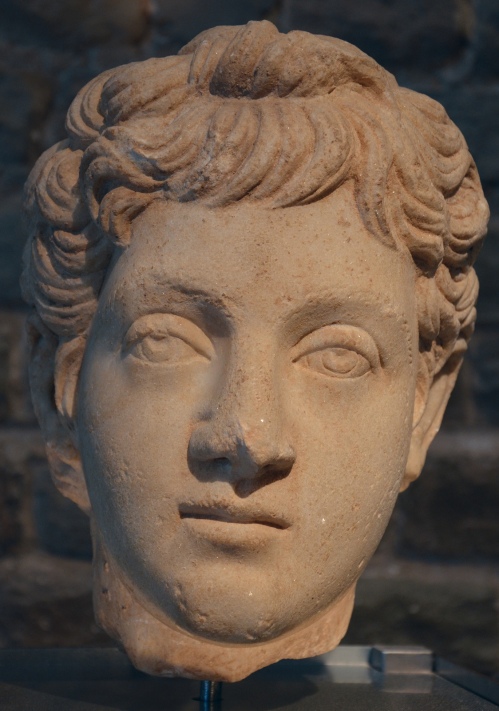Built in 1974 over the remains of a Roman villa, the Romano-Germanic Museum in Cologne houses an extensive collection of Roman artefacts from the Roman settlement of Colonia Claudia Ara Agrippinensium (named after Agrippina the Younger, born in Cologne), the capital of the Imperial Province of Germania Inferior. The museum houses the largest worldwide collection of Roman glasses including the Cologne cage cup and the miniature portrait of Emperor Augustus in turquoise glass. It is also home to the world famous Dionysus mosaic and the Sepulcher of Poblicius.

Reconstructed plan of the Roman city of Colonia Claudia Ara Agrippinensium (Cologne) in the 3rd/4th century AD, Romisch-Germanisches Museum, Cologne © Carole Raddato
In addition to the everyday life artefacts of Roman Cologne, the Romano-Germanic Museum exhibits numerous portraits of members of the Julio-Claudian dynasty (including Augustus and his wife Livia Drusilla) and of the Nerva-Antonine dynasty.
The Nervan-Antonines are well represented as it was in Cologne that Trajan accessed to the imperial throne. The then governor of Germania Inferior received the message just a few days after Nerva’s death in February AD 98. The messenger was none other than his cousin and successor Hadrian, who at the time was stationed as a military tribune at Moguntiacum (Mainz) in Germania Superior. Hadrian’s first visit to Colonia Agrippinensium as emperor was in the late spring of AD 122 on his way to Britannia. During his time in the capital, Hadrian probably stayed with his close friend, Aulus Platorius Nepos, the then governor of the province. More than a decade later, between AD 134 and 138, Hadrian’s tour of the German provinces was commemorated on the imperial coinage (see here).
Nerva (ruled 96 – 98)
Trajan (ruled 98 – 117)
Hadrian (ruled 117 – 138)
Antoninus Pius (ruled 138 – 161)
Marcus Aurelius (ruled 161 – 180)

Statue of a Roman citizen of the second quarter of the 2nd century A.D., a portrait of the young Marcus Aurelius was added by a neo-classical sculptor sometime before 1818, Romisch-Germanisches Museum, Cologne © Carole Raddato
Lucius Verus (ruled 161 – 169)
Commodus (ruled 177 – 192)
Many more portraits of members of the Nerva-Antonine dynasty can be viewed from my image collection on Flickr.
Related posts: The Nervan-Antonines in Palazzo Massimo alle Terme, Rome / The Nervan-Antonines in Copenhagen
Source: Following Hadrian








